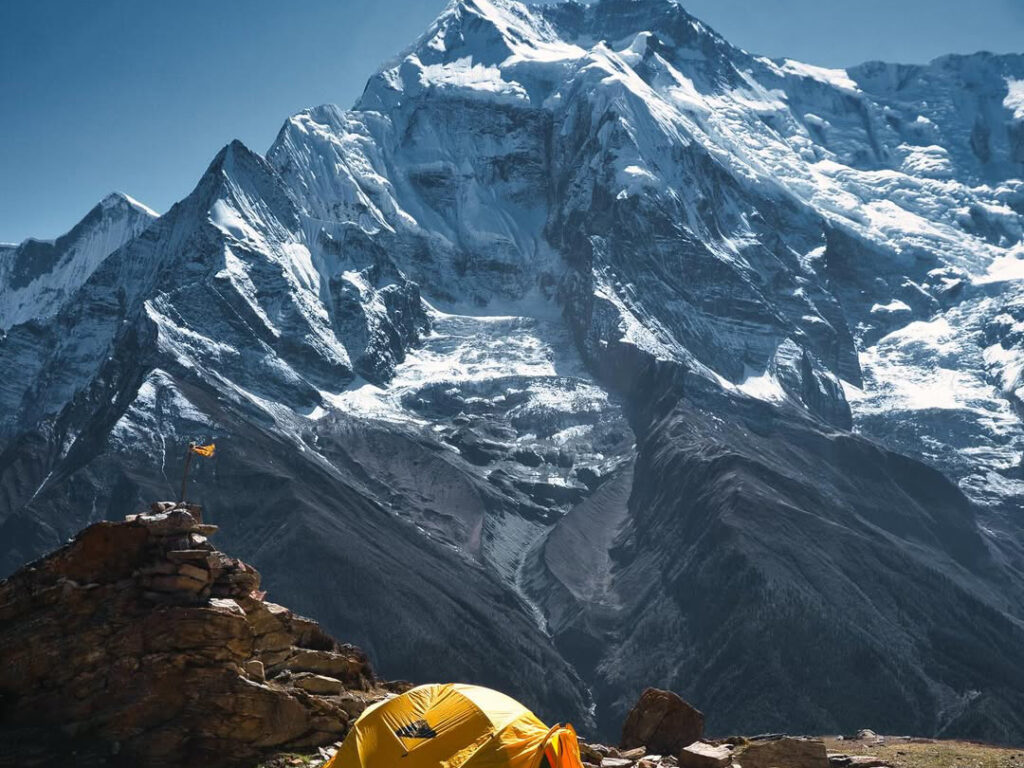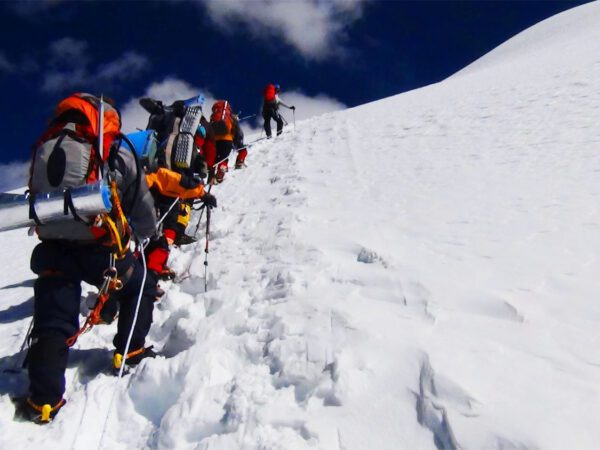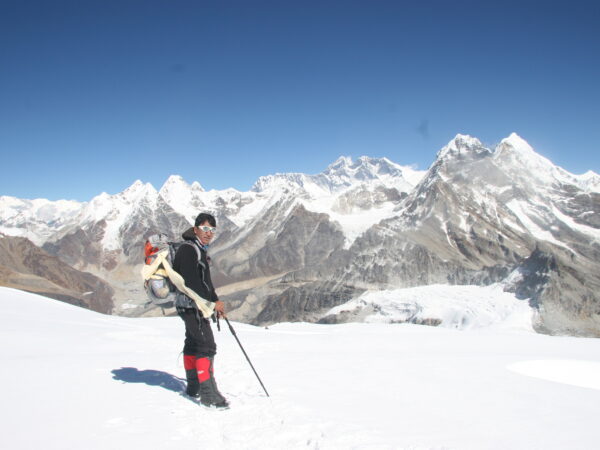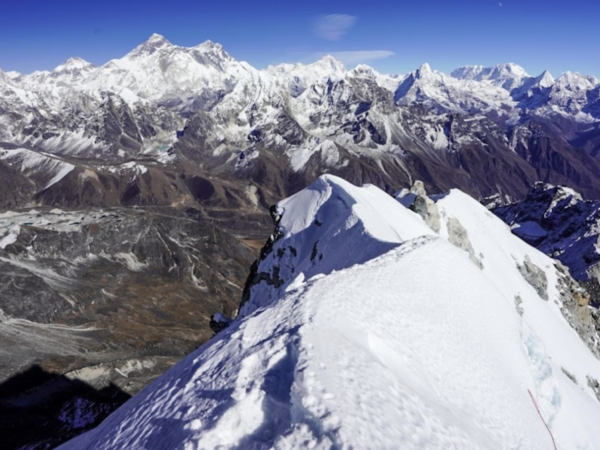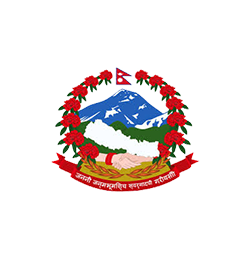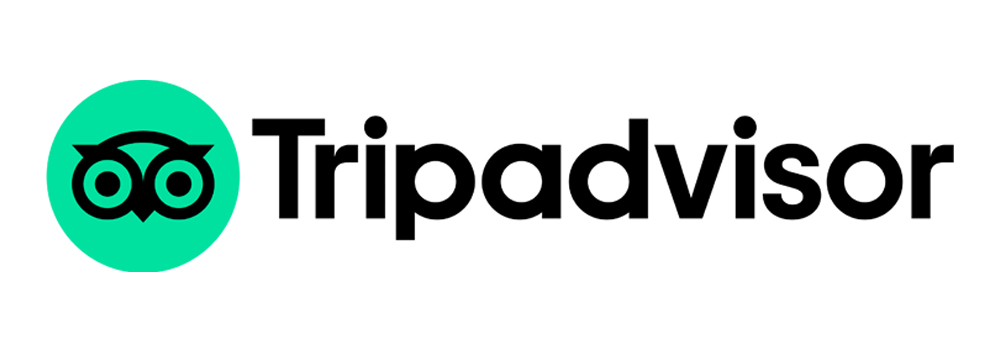Why us?
- Expertise & Experience
- Personalized & Flexible Itineraries
- Local Native Guides
- Competitive Pricing Without Compromising Quality
- Guaranteed Departure
- Top-notch Service
- Hassle-Free Permits & Logistics
- Small Groups for a Better Experience
- Safety First Approach
- Eco-Friendly & Sustainable Travel
- Exceptional Customer Service
- Community Support & Ethical Tourism
Highlights
- Summit Chulu West Peak (6,419m) – A thrilling climb in the Annapurna region with breathtaking Himalayan views.
- Trek the Famous Annapurna Circuit – Walk through diverse landscapes, lush valleys, and alpine terrain.
- Thorong La Pass (5,416m) – Cross one of the highest trekking passes in the world.
- Spectacular Himalayan Views – Witness Annapurna, Dhaulagiri, Manaslu, Gangapurna & Tilicho Peak.
- Cultural Exploration – Experience traditional Tibetan-influenced villages and Buddhist monasteries.
- Acclimatization & Adventure – Carefully planned itinerary for a safe and successful climb.
- Yak Kharka & High Camp – Trek through remote high-altitude pastures and camping spots.
- Muktinath Temple Visit – Explore a sacred pilgrimage site for both Hindus and Buddhists.
- Scenic Flight from Jomsom to Pokhara – Enjoy aerial views of the Himalayas.
- Expert Guides & Sherpa Support – Climb with experienced mountaineering professionals.
Overview
Chulu West Peak (6,419m) is one of the most sought-after trekking peaks in the Annapurna region, offering an exhilarating climbing experience combined with the stunning landscapes of Nepal. This expedition is perfect for adventure seekers looking to test their limits while embracing the breathtaking beauty of the Himalayas.
Why Choose Chulu West Peak Climbing?
Nestled within the Damodar Himal range in Nepal’s Manang district, Chulu West Peak is surrounded by awe-inspiring snow-capped peaks. The climb offers a unique combination of trekking and mountaineering, making it an excellent challenge for both experienced climbers and enthusiastic beginners.
The journey to Chulu West Peak takes you through the picturesque Manang Valley, known for its dramatic landscapes, traditional villages, and rich Tibetan-influenced culture. Along the way, trekkers will traverse the legendary Thorong La Pass (5,416m), one of the highest mountain passes in the world, and explore the diverse terrain of the Annapurna Circuit.
Highlights of Chulu West Peak Climb
- Summit Chulu West (6,419m) with breathtaking views of Annapurna, Dhaulagiri, and Manaslu.
- Experience the thrill of crossing Thorong La Pass (5,416m), the highest point on the Annapurna Circuit.
- Explore Manang Valley, home to unique Tibetan-style villages and monasteries.
- Visit Muktinath Temple (3,800m), a sacred site for Hindus and Buddhists.
- Witness panoramic views of the three 8,000-meter peaks: Mt. Dhaulagiri (8,167m), Mt. Manaslu (8,163m), and Mt. Annapurna (8,091m).
- Immerse yourself in the local culture, interacting with the Gurung, Thakali, and Tibetan communities.
- Experience the world’s deepest gorge, the Kali Gandaki Gorge, en route to Jomsom.
Trekking & Climbing Route
The journey begins in Kathmandu, where climbers prepare for the ascent. A scenic drive to Besisahar is followed by a rugged jeep ride to Chame, the gateway to the Annapurna Circuit. The trek gradually ascends through Pisang, Manang, and Yak Kharka before reaching Chulu West Base Camp.
At base camp, climbers undergo acclimatization and technical training, learning to use ice axes, crampons, and ropes under expert guidance. The summit attempt is typically made in a single push from the high camp, navigating steep and icy slopes to reach the peak. After celebrating the summit success, the descent follows the classic Annapurna Circuit route through Muktinath and Jomsom before flying back to Pokhara and then returning to Kathmandu.
Difficulty & Preparation
Chulu West Peak is considered a moderately challenging climb, suitable for both novice and experienced climbers. However, the ascent requires a high level of physical fitness, endurance, and acclimatization to the high-altitude environment.
We recommend:
- Strength training and endurance exercises like hiking, long-distance running, and cycling.
- High-altitude trekking experience to improve acclimatization.
- Learning basic mountaineering skills for handling climbing gear.
Best Time to Climb Chulu West Peak
The ideal seasons for Chulu West Peak climbing are spring (March-May) and autumn (September-November). These months offer stable weather conditions, clear skies, and optimal temperatures for trekking and climbing.
While winter climbs are possible for experienced mountaineers, harsh weather conditions and heavy snowfall can make the ascent more challenging. The monsoon season (June-August) is not recommended due to unpredictable weather and landslides in the region.
Required Permits
To climb Chulu West Peak, you will need the following permits:
- Trekkers’ Information Management System (TIMS) Card
- Annapurna Conservation Area Project (ACAP) Permit
- Peak Climbing Permit from the National Mountaineering Association (NMA)
All necessary permits are included in our package, and we handle the application process on your behalf.
Alternative Trekking Peaks of Chulu West Peak Climbing
If you’re looking for alternatives to Chulu West Peak Climbing, here are a few excellent options, each with varying levels of difficulty and unique characteristics:
For those seeking a moderate challenge with less technical difficulty, Island Peak Climbing (6,189m) in the Everest region is a great choice. It requires basic mountaineering skills like using crampons and ice axes but is considered one of the more beginner-friendly peaks above 6,000m. Similarly, Mera Peak Climbing (6,476m) offers a non-technical climb, making it another suitable option for climbers with trekking experience but little mountaineering background. It’s the highest trekking peak in Nepal, offering breathtaking views of the Everest massif.
For climbers looking for something with more technical difficulty, Lobuche Peak Climbing (6,119m) presents a more challenging climb compared to Island Peak, requiring the use of ropes and a bit of technical expertise. Another technical option is Pisang Peak (6,091m), located in the Annapurna region. This peak involves steep sections that require skillful use of mountaineering gear, making it a more challenging but rewarding climb.
If you’re looking for an easier climb, Pokalde Peak (5,806m) could be a great choice. It’s less technical and offers beautiful views of the Everest region. For a slightly more demanding but still relatively straightforward climb, Yala Peak (5,732m) in the Langtang region offers an easy ascent with stunning views of the surrounding mountains, making it a great choice for those new to climbing.
For climbers looking for a less crowded experience and willing to take on more challenging routes, Kyajo Ri Peak (6,186m) and Hiunchuli Peak (6,441m) offer more technical ascents and solitude, while still providing spectacular mountain scenery.
Ultimately, the choice depends on your experience, goals, and preferred level of difficulty, with each peak offering a unique adventure and different views of Nepal’s majestic Himalayan range.
Chulu West Peak Climbing – 17 Days - Itinerary
Arrival in Kathmandu (1,350m) – Transfer to Hotel
Welcome to Nepal! Upon arrival at Tribhuvan International Airport, our representative will greet you and escort you to your hotel in Kathmandu. Enjoy the rest of the day exploring the vibrant streets, bustling markets, and rich cultural landmarks of the city. In the evening, attend a pre-trek briefing with our guide, who will provide essential information about the upcoming adventure.
Drive from Kathmandu to Syange (1,140m) via Besisahar (823m) – 7-9 Hours
Begin the journey with a scenic drive through picturesque landscapes, passing lush green hills, terraced farms, and traditional villages. We travel through Besisahar before reaching Syange, where we will stay overnight.
Trek from Syange to Dharapani (1,943m) – 5-6 Hours
Start the trek by crossing a suspension bridge and ascending towards Tal (1,700m), a charming village beside the Marsyangdi River. Continue through rugged terrain before arriving at Dharapani, where we spend the night.
Trek from Dharapani to Chame (2,715m) – 6-7 Hours
The trail gradually ascends, passing through dense pine forests and traditional Tibetan-style villages like Bagarchhap. Enjoy breathtaking views of Lamjung Himal and Annapurna II as we reach Chame, the administrative center of the Manang District.
Day 5: Trek from Chame to Pisang (3,250m) – 4-5 Hours
Walk through Telekhu and witness awe-inspiring views of Annapurna and Pisang Peak (6,091m). Cross the Marsyangdi River via a suspension bridge and continue through pine forests before reaching Pisang, where we stay overnight.
Day 6: Trek from Pisang to Manang (3,519m) – 7-9 Hours
Trek through the culturally rich village of Braga, known for its ancient monastery. Manang is a popular acclimatization stop, offering stunning views of Annapurna II, III, and Gangapurna.
Acclimatization Day in Manang
Acclimatization is crucial for high-altitude trekking. Stay active by exploring Khangsar (3,756m) and enjoy panoramic views of Annapurna, Tilicho Peak, and Chulu Peaks.
Trek from Manang to Yak Kharka (4,018m) – 4-5 Hours
Continue the journey through juniper forests and yak pastures, passing Thorong Khola. The landscape becomes more arid as we gain elevation. We stay overnight in Yak Kharka or Letdar, depending on conditions.
Trek from Yak Kharka to Chulu West Peak Base Camp (4,900m) – 4-5 Hours
A challenging yet rewarding trek leads us to Chulu West Base Camp, where we set up camp and enjoy incredible views of the Annapurna range.
Trek from Base Camp to High Camp (5,100m) – 4-5 Hours
Ascend to High Camp, where the thinning air and pristine white landscapes create a surreal experience. We prepare for the summit attempt and rest overnight.
Summit Chulu West Peak (6,419m) – Return to Base Camp
Start early for the summit push, navigating icy ridges and technical sections. The reward is an unparalleled view of Annapurna, Dhaulagiri, and the Tibetan Plateau. Descend back to Base Camp for an overnight stay.
Trek from Base Camp to Thorong La Phedi (4,541m) – 5-6 Hours
Descend towards Thorong La Phedi, the last settlement before the Thorong La Pass crossing.
Cross Thorong La Pass (5,416m) – Trek to Muktinath (3,802m) – 8-9 Hours
One of the most challenging days of the trek, we cross the famous Thorong La Pass, enjoying panoramic views of Annapurna and Dhaulagiri. Descend to Muktinath, a sacred pilgrimage site.
Trek from Muktinath to Jomsom (2,750m) via Kagbeni – 5-6 Hours
Descend through lush meadows and fruit orchards, passing the ancient village of Kagbeni before reaching Jomsom in the Kali Gandaki Valley.
Fly from Jomsom to Pokhara (820m) – Transfer to Hotel
Enjoy a scenic 15-20 minute flight from Jomsom to Pokhara. Spend the day exploring Phewa Lake, the World Peace Pagoda, and local attractions.
Drive from Pokhara to Kathmandu – 6-7 Hours
Return to Kathmandu via a scenic drive, reminiscing about the incredible journey.
Departure from Kathmandu
Our team will transfer you to Tribhuvan International Airport for your departure, marking the end of an unforgettable trekking adventure.
Inclusions
What's included
- Airport Transfers: Private vehicle for pick-up and drop-off.
- Accommodation in Kathmandu: Two nights in a standard twin-sharing hotel with breakfast.
- Meals During the Trek: Three meals a day (Breakfast, Lunch, and Dinner).
- Fresh Fruits: Served every night after dinner.
- Trekking Accommodation: Tea house/lodge stays throughout the trek.
- Permits & Paperwork: Includes ACAP entry permit and TIMS card.
- Peak Climbing Permit & Fees: All necessary climbing permits and applicable fees.
- High-Altitude Accommodation: Three nights in twin-sharing tents after Yak Kharka with hygienic meals (Breakfast, Lunch, and Dinner).
- Camping & Climbing Gear: Includes camping tents and climbing ropes.
- Transportation: Bus to Besishar and a tourist bus from Pokhara to Kathmandu, Shared Jeep from Besishar to Syange, Domestic flight from Jomsom to Pokhara.
- Experienced Team: Trekking Guide & Climbing Sherpa - Government-licensed, highly experienced, friendly, and English-speaking, with all expenses covered (salary, food, accommodation, transport, and insurance). Porters: Strong and well-equipped porters (1 porter for 2 trekkers), with all expenses covered (salary, food, accommodation, and insurance).
- Medical Support: First aid kit available: Oximeter readings twice daily to monitor oxygen saturation, heart rate, and symptoms of Altitude Mountain Sickness (AMS). Emergency Assistance: Arrangement of emergency helicopter evacuation (to be claimed through your travel insurance).
- Essential Trekking Gear: Use of sleeping bag, down jacket, duffel bag, and walking poles (to be returned after the trip).
- Additional Benefits: Government taxes and official expenses.
- One-night accommodation in Pokhara with breakfast.
- Everest Hikes trekking T-shirt.
- Trip Achievement Certificate upon successful completion.
What's not included
- Meals in Kathmandu & Pokhara: Lunch and dinner are not included.
- Nepal Entry Visa: Visa is available on arrival at Tribhuvan International Airport, Kathmandu.
- Travel & Medical Insurance: Personal insurance covering trip cancellation, medical emergencies, and evacuation is required.
- International Airfare: Flights to and from Nepal.
- Personal Expenses: Any additional expenses of a personal nature.
- Beverages & Extra Food on Trek: Alcoholic and non-alcoholic drinks, including tea, coffee, hot chocolate, cocoa, and mineral water.
- Extra snacks and food purchased along the trek.
- Desserts such as chocolate, cake, pie, and pudding.
- Hot Showers & Battery Charging: Charges for hot showers and battery/device charging at tea houses.
- Tips & Gratuities: Tips for guides, porters, and drivers (tipping is customary and appreciated).
- Excess Baggage: More than 10 kg of baggage allowance for the Jomsom flight will incur additional charges.
- Early Trek Return Policy: If you return early due to sickness or other reasons, no refunds will be provided for unused services (flights, hotels, mountain rooms, meals, etc.).
- Additional expenses in Kathmandu (hotel, meals, etc.) will be at your own cost.

